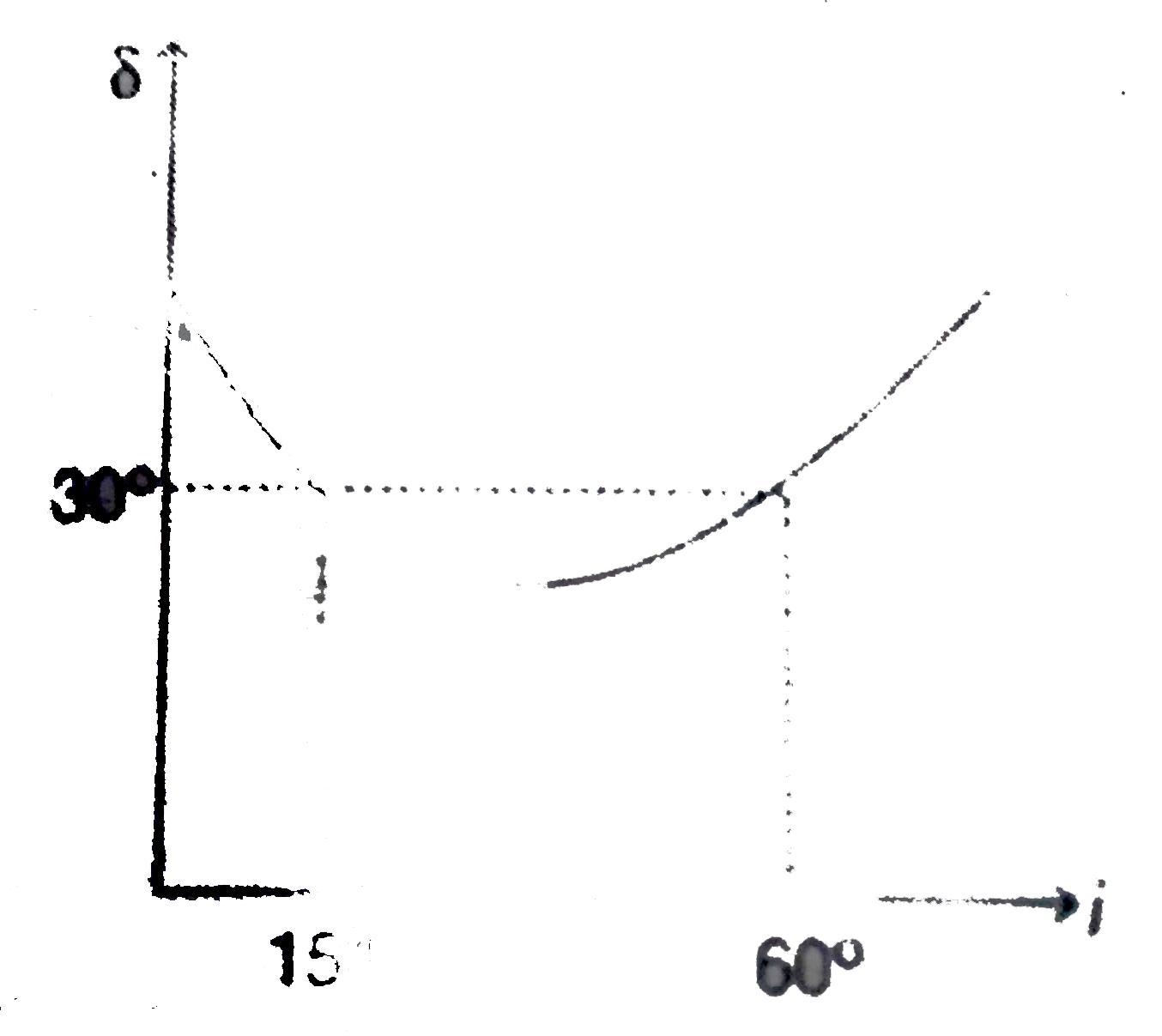Establish the following relation for total deviation δ of a ray light refracted through a traingular glass prism.
δ=i+e−A
Where I is the angle of incidence, e is the angle of emergence and A is the angle of the prism.Solution in Assamese
Step by step video & image solution for Establish the following relation for total deviation delta of a ray light refracted through a traingular glass prism. delta = i+e-A Where I is the angle of incidence, e is the angle of emergence and A is the angle of the prism. by Physics experts to help you in doubts & scoring excellent marks in Class 12 exams.
Updated on:21/07/2023Topper's Solved these Questions
Similar Questions
Give the dimensional representation of Resistance.
View SolutionGive the dimensions of Tesla.
View SolutionFor a prism kept in air, it is found that for an angle of incidence 60^(@) , the angle of refraction 'A', angle of deviation delta , and angle of emergence 'e' become equal. The minimum angle of incidence of a ray that will be transmitted through the prism is
View SolutionFor a prism kept in air, it is found that for an angle of incidence 60^(@) , the angle of refraction A, angle of deviation delta and anble of emergence e become equal. Then, the refractive index of the prism is
View SolutionLight rays from a source are incident on a glass prism of index of refraction μ and angle of prism α At near normal incidence, the angle of deviation of the emerging rays is
View SolutionMinimum deviation is observed with a prism having angle of prism A, angle of deviation δ angle of incidence i and angle of emergence e. We then have generally
View SolutionFigure shown the graph of angle of deviation δ verses angle of incidence I for a light ray striking a prism. The prism angle is

View SolutionA monochromatic ray of light is incident normally on one of the refracting surfaces of a prism . The emergent ray grazes the second refracting surface . What is the angle of the prism if the refractive index of the material of the prism is 1.6 ?
View SolutionIt is observed that for refraction through a prism angle of incidence i is exactly equal to the angle of deviation δ. The prism is in __________.
View SolutionA ray of light passes through an equilateral glass prism in such a way that the angle of incidence is equal to the angle of emergence and each of these angles is 34 times the angle of the prism. Determine the angle of deviation and the refractive index of the glass prism.
View SolutionExplain the phenomenon of refraction through prism. Derive the following relation between angle of prism and angle of deviation. ∠i+∠e=∠A+∠δ.
View SolutionIf A is angle of prism, delta is angle of deviation, i is angle of incidence and e angle of emergence,then what is the correct relation between them ?
View SolutionA ray of light is incident normally on one face of a prism of refracting angle A. After travelling through prism, the ray emerges from the second refracting surface making an angle of deviation of δ. The refractive index of the material of prism is
View Solution(a) Define the following when refraction takes place through an equilateral glass prism (i) angle of incidence (ii) prism (iii) refracting angle of prism (iv) angle of emergence (v) angle of deviation (b) How are angle of incidence, angle of prism, angle of emergence and angle of deviation related to each other?
View SolutionWrite a relation between the angle of incidence (i), angle of emergence (e), angle of prism (A) and angle of deviation (d) for a ray of light passing through an equilateral prism.
View SolutionA ray of light incident at an angle of incidence 'I' passes through an equilateral glass prism such that the refracted ray inside the prism is parallel to its base and emerges from the prism at an angle of emergence 'e'.
How is the angle of emergence 'e' related to the angle of incidence 'i' ?
View Solution
